LECTURE SHEET (EXERCISE III LEVEL -II (ADVAMCED) INTEGER TYPE QUESTIONS) from AAKASH SERIES GEOMETRICAL OPTICS for Class 12
| Class 12 | PHYSICS |
| Chapter | GEOMETRICAL OPTICS |
| AAKASH SERIES | LECTURE SHEET (EXERCISE III LEVEL -II (ADVAMCED) INTEGER TYPE QUESTIONS) |
| Medium | English |
| Academic Year | 2023-2024 |
Question 22
Two blocks each of masses m lie on a smooth table. They are attached to two other masses as shown in figure. The pulleys and strings are light. An object O is kept at rest on the table. The sides AB and CD of the two blocks are made reflecting. The acceleration of two images formed in those two reflecting surfaces with respect to each other is
 View Solution
View SolutionQuestion 24
Figure shows a torch producing a straight light beam falling on a plane mirror at an angle 60∘. The refected beam makes a spot P on the screen along y-axis. If at t=0 the mirror starts rotating about the hinge A with an angular velocity ω=1∘ per second clockwise, find the speed of the spot on screen after time t=15s
 View Solution
View SolutionQuestion 29
A small block of mass m and a concave mirror of radius R fitted with a stand lie on a smooth horizontal table with a separation d between them. The mirror together with its stand has a mass m. The block is pushed at t = 0 towards the mirror so that it starts moving towards the mirror at a constant speed V and collides with it. The collision is perfectly elastic. Find the velocity of the image (a) at a time t<dV, (b) at a time t>dV. View SolutionQuestion 30
A concave mirror of focal length 10cm and a convex mirror of focal length 15cm are placed facing each other 40cm apart. A point object is placed between the mirrors, on their common axis and 15cm from the concave mirror. Find the position and nature of the image produced by successive reflections, first at the concave mirror and then at the convex mirror. View SolutionQuestion 38
A point object is placed infront of a plane mirror as shown in figure.
XOM⇒x- co-ordinate of object relative to mirror
XIM⇒x− co -ordinate of image relative to mirror
XIM=−XOM
differentiating V1M=−VOM
VI−VM=−(V0−VM)
Velocity if image relative to mirror = velocity of object relative to mirror.
basing on this information answer the question

Two bodies A and B are moving towards a plane mirror with speeds VA and VB respectively as shown in fig. The speed of image of A with respect to the body B is
 View Solution
View SolutionQuestion 39

The reflection surface of a plane mirror is vertical. A particle is projected in a vertical plane which is also perpendicular to the mirror. The initial velocity of the particle is 10 m/s and the angle of projection is 60∘. The point of projection is at a distance 5 m from the mirror. The particle moves towards the mirror. Just before the particle touches the mirror, the magnitude of relative velocity of approach of the particle and its image is View SolutionQuestion 44
A point object is kept of a plane mirror. The plane mirror is performing SHM of amnplitude 2cm. The plane mirror moves along the3 x− axis is normal to the mirror. The amplitude of the mirror is scuh that the object is always infront of the mirror. The amplitude of SHM of the image is View SolutionQuestion 53
A unit vector along the incident ray of light is ˆi. The unit vector for the corresponding refracted ray of light is ˆr.ˆn, a unit vector normal to the boundary of the medium and directed towards the incident medium. If μ is the refractive index of the medium, then snell's law (second law) of refraction is View SolutionQuestion 64
The XY plane is the boundary between two tranparednt media. Medium 1 with z≥0 has a refraxtive index of √2 and medium 2 with z≤0 has a refractive index of √3. A ray of light in medium 1 given by the vector 6√3ˆi+8√3ˆj−10ˆk is incident on teh plane of separation. Find the unit vector in the direction of teh refracted ray in medium 2. View SolutionQuestion 73
A ray of monochromatic light is incident on one refracting face of a prism of angle 75∘. It passes thorugh the prism and is incident on the other face at the critical angle. If the refractive index of the material of the prism is √2, the angle of incidence on the first face of the prism is View SolutionQuestion 84
A point source S is placed at the bottom of different layers as shown in the figure. The refractive index of bottom most layer is μ0. The refractive index of any other upper layer is μ(n)=μ0−μ04n−18 where n=1,2………….A ray of light with angle i slightly more than 30∘ starts from the source S. Total internal reflection takes place at the upper surface of a layer having n equal to
 View Solution
View SolutionQuestion 85
A person looking through a telescope focuses lens at a point on the edge of the bottom of an empty cylindrical vessel. Next he fills the entire vessel with a liquid oif refractive index μ, without disturbing the telescope. Now, he observes the mid point of the vessel. Determine the radius to depth ratio of the vesselView SolutionQuestion 93
The xz plane separates two media A and B with refractive indices μ1 & μ2 respectively. A ray of light travels from A to B. Its directions in the two media are given by the unit vectors, →rA=aˆi+bˆj & →rB=αˆi+βˆj respectively where ˆi & ˆj are unit vectors in the x & y directions. Then :View SolutionQuestion 100
A man of height 1.47 m stands on a straight road on a hot day. The vertical temperature in the air results in a variation of refractive index with height y as μ=μ0√(1+ay) where μ0 is the refractive index of air near the road a =1.5×10−6/m. What is the apparent length of the road man is able to sec?View SolutionQuestion 110
A transparent solid sphere of radius 2cm and density ρ floats in a transparent liquid of density 2ρ kept in a beaker. The bottom of the beaker is spherical in shape with radius of curvature 8cm and is silvered to make it concave mirror as shown in the figure. When an object is placed at a distance of 10cm directly above the centre of the sphere C, its final image coincides with it. Find h (as shown in the figure ), the height of the liquid surface in the beaker from the apex of the bottom. Consider the paraxial rays only. The refractive index of the sphere is 3/2 and that of the liquid is 4/3.
 View Solution
View SolutionQuestion 111
A transparent solid sphere of radius 2cm and density ρ floats in a transparent liquid of density 2ρ kept in a beaker. The bottom of the beaker is spherical in shape with radius of curvature 8cm and is silvered to make it concave mirror as shown in the figure. When an object is placed at a distance of 10cm directly above the centre of the sphere C, its final image coincides with it. Find h (as shown in the figure ), the height of the liquid surface in the beaker from the apex of the bottom. Consider the paraxial rays only. The refractive index of the sphere is 3/2 and that of the liquid is 4/3.
 View Solution
View SolutionQuestion 112
A transparent solid sphere of radius 2cm and density ρ floats in a transparent liquid of density 2ρ kept in a beaker. The bottom of the beaker is spherical in shape with radius of curvature 8cm and is silvered to make it concave mirror as shown in the figure. When an object is placed at a distance of 10cm directly above the centre of the sphere C, its final image coincides with it. Find h (as shown in the figure ), the height of the liquid surface in the beaker from the apex of the bottom. Consider the paraxial rays only. The refractive index of the sphere is 3/2 and that of the liquid is 4/3.
 View Solution
View SolutionQuestion 113
A long rectangular slab of transparent medium of thickness d placed on a table with its length parallel to the x-axis and width parallel to the axis. A ray of light travelling inair makes a near normal incidence on the slab as shown. Taking the point of incidence as orign (0,0,0). The refraction index μ of the medium varies as μ=μ01−(xr) where μ1 and r(>d) are constants. The refractive index of air is μ0
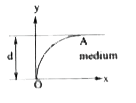
The x-coordinate of the point A where the ray intersects the upper surface of the slab air boundary is View SolutionQuestion 114
A long rectangular slab of transparent medium of thickness d placed on a table with its length parallel to the x-axis and width parallel to the axis. A ray of light travelling inair makes a near normal incidence on the slab as shown. Taking the point of incidence as orign (0,0,0). The refraction index μ of the medium varies as μ=μ01−(xr) where μ1 and r(>d) are constants. The refractive index of air is μ0

The x-coordinate of the point A where the ray intersects the upper surface of the slab air boundary is View SolutionQuestion 115
A long rectangular slab of transparent medium of thickness d placed on a table with its length parallel to the x-axis and width parallel to the axis. A ray of light travelling inair makes a near normal incidence on the slab as shown. Taking the point of incidence as orign (0,0,0). The refraction index μ of the medium varies as μ=μ01−(xr) where μ1 and r(>d) are constants. The refractive index of air is μ0

The x-coordinate of the point A where the ray intersects the upper surface of the slab air boundary is View SolutionQuestion 116
In the diagram shown ray of light is incident on the first medium boundary at angle 30∘ the medium has refractive index 2.

The second layer has refractive index μ/2. A graph is given between deviation and refractive index μ. The deviation is measured by considering the final emergent ray and the incident ray.
Aswer the following questions
Value μ1 will be View SolutionQuestion 117
In the diagram shown ray of light is incident on the first medium boundary at angle 30∘ the medium has refractive index 2.

The second layer has refractive index μ/2. A graph is given between deviation and refractive index μ. The deviation is measured by considering the final emergent ray and the incident ray.
Aswer the following questions
Value of θ1 will be View SolutionQuestion 118
In the diagram shown ray of light is incident on the first medium boundary at angle 30∘ the medium has refractive index 2.

The second layer has refractive index μ/2. A graph is given between deviation and refractive index μ. The deviation is measured by considering the final emergent ray and the incident ray.
Aswer the following questions
Value of θ1 will be View SolutionQuestion 121
The flat bottom of cylinder tank is silvered and water (μ=43) is filled in the tank upto a height h. A small bird is hovering at a height 3h from the bottom of the tank. When a small hole is opened near the bottom of the tank, the water level falls at the rate of 1 cm/s. The bird will perceive that his velocity of image is 1/x cm/sec (in downward directions) where x is View SolutionQuestion 123
An object kept on the principal axis and infront of a spherical mirror, is moved along the axis itself. Its lateral magnification m is measured, and plotted versus object distance |u| for a range of u, as shown in figure. The magnification of the object when it is placed at a distance 20cm in front of the mirror is
 View Solution
View SolutionQuestion 134
A thin double convex lens is cut into two equal pieces A and B by a plane containing principal axis. The piece B is further cut into two more pieces pieces C and D by another plane perpendicular to the principal axis. If the focal power of the original lens is P, then thos of A and C areView SolutionQuestion 135
Two plano concave lenses of glass of refractive index 1.5 have radii of curvature 20 cm and 30 cm respectively. They are placed in contact with the curved surface towards each other and the space between them is filled with a liquid of refractive index 5/2. The focal length of the combination is (in cm) View SolutionQuestion 136
The two surfaces of a biconvex lens has same radii of curvatures . This lens is made of glass of refractive index 1.5 and has a focal length of 10 cm in air. The lens is cut into two equal halves along a plane perpendicular to its principal axis to yield two plane - convex lenses. The two pieces are glued such that the convex surfaces touch each other. If this combination lens is immersed in water (refractive index =43 ), its focal length (in cm ) is View SolutionQuestion 137
Two converging glass lenses A and B have focal lengths in the ratio 2:1. The radius of curvature of first surface of lens A is 1/4 th of the second surface where as the radius of curvature of first surface of lens B is twice that of second surface. Then the ratio between the radii of the first surfaces of A and B is View SolutionQuestion 138
Two thin symmetrical lenses of different nature and of different material have equal radii of curvature R=15cm. The lenses are put close together and immersed in water (μw=43). The focal length of the system in water is 30 cm. The difference between refractive indices of the two lenses is View SolutionQuestion 140
A point object O approaches a biconvex lens of focal length 40 cm along its optic axis with a speed of 10 m/s while the later receeds away from the former with a speed of 4 cm/s. Find the speed and direction of motion of the image when the object is at a distance of 60 cm from the lens.
 View Solution
View SolutionQuestion 142
A convex lens of focal length 10 cm and a concave lens of same focal length in value are placed co-axially at a separation of 20 cm as shown in figure. A point object is at infinity on the principal axis. Take the optic center of convex lens as origin of co ordinate system and the principal axis as x-axis as shown in figure.
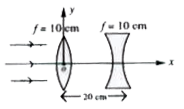
The co-ordinates of the image formed after refraction through both the lenses is View SolutionQuestion 143
A convex lens of focal length 10 cm and a concave lens of same focal length in value are placed co-axially at a separation of 20 cm as shown in figure. A point object is at infinity on the principal axis. Take the optic center of convex lens as origin of co ordinate system and the principal axis as x-axis as shown in figure.

The co-ordinates of the image formed after refraction through both the lenses is View SolutionQuestion 144
A convex lens of focal length 10 cm and a concave lens of same focal length in value are placed co-axially at a separation of 20 cm as shown in figure. A point object is at infinity on the principal axis. Take the optic center of convex lens as origin of co ordinate system and the principal axis as x-axis as shown in figure.
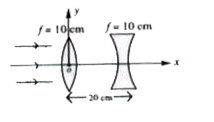
In the initial positin (as given in the passage ) if the concave lens has a velocit of 9 cm/s towards the convex lens, the velocity of the final image will be View SolutionQuestion 146
One of the surfaces of a biconvex lens of a focal length 10 cm is silvered as shown in figure. Radius of curvature of silvered surface is 10 cm. At a given instant, if speed of object is 1m/s, then the speed of image at that instant is (10+α) m/s. What will be the value of α? (μ=1.5)
 View Solution
View Solution
All Exercises from AAKASH SERIES Class 12 PHYSICS GEOMETRICAL OPTICS
- LECTURE SHEET (EXERCISE I LEVEL -I (MAIN) STRAIGHT OBJECTIVE TYPE QUESTIONS)
- LECTURE SHEET (EXERCISE I LEVEL -II (ADVANCED) INTEGER TYPE QUESTIONS)
- LECTURE SHEET (EXERCISE I LEVEL -II (ADVANCED) LINKED COMPREHENSION ANSWER TYPE QUESTIONS)
- LECTURE SHEET (EXERCISE I LEVEL -II (ADVANCED) MATRIX MATCHING ANSWER TYPE QUESTIONS)
- LECTURE SHEET (EXERCISE I LEVEL -II (ADVANCED) MORETHAN CORRECT ANSWER TYPE QUESTIONS)
- LECTURE SHEET (EXERCISE I LEVEL -II (ADVANCED) STRAIGHT OBJECTIVE TYPE QUESTIONS)
- LECTURE SHEET (EXERCISE II LEVEL -I (MAIN) STRAIGHT OBJECTIVE TYPE QUESTIONS)
- LECTURE SHEET (EXERCISE II LEVEL -II (ADVANCED) INTEGER TYPE QUESTIONS)
- LECTURE SHEET (EXERCISE II LEVEL -II (ADVANCED) LINKED COMPREHENSION TYPE QUESTIONS)
- LECTURE SHEET (EXERCISE II LEVEL -II (ADVANCED) MATRIX MATCHING TYPE QUESTIONS)
- LECTURE SHEET (EXERCISE II LEVEL -II (ADVANCED) MORE THAN ONE CORRECT TYPE QUESTIONS)
- LECTURE SHEET (EXERCISE II LEVEL -II (ADVANCED) STRAIGHT OBJECTIVE TYPE QUESTIONS)
- LECTURE SHEET (EXERCISE III LEVEL -I (MAIN) STRAIGHT OBJECTIVE TYPE QUESTIONS)
- LECTURE SHEET (EXERCISE III LEVEL -II (ADVAMCED) INTEGER TYPE QUESTIONS)
- LECTURE SHEET (EXERCISE III LEVEL -II (ADVAMCED) LINKED COMPREHENSION TYPE QUESTIONS)
- LECTURE SHEET (EXERCISE III LEVEL -II (ADVAMCED) MATRIX MATCHING TYPE QUESTIONS)
- LECTURE SHEET (EXERCISE III LEVEL -II (ADVAMCED) MORE THAN ONE CORRECT TYPE QUESTIONS)
- LECTURE SHEET (EXERCISE III LEVEL -II (ADVAMCED) STRAIGHT OBJECTIVE TYPE QUESTIONS)
- LECTURE SHEET (EXERCISE-I (LEVEL-I (MAIN) STRAIGHT OBJECTIVE TYPE QUESTIONS))
- LECTURE SHEET (EXERCISE-I (LEVEL-II (ADVANCED) INTEGER TYPE QUESTIONS))
- LECTURE SHEET (EXERCISE-I (LEVEL-II (ADVANCED) LINKED COMPREHENSION TYPE QUESTIONS))
- LECTURE SHEET (EXERCISE-I (LEVEL-II (ADVANCED) MATRIX MATCHING TYPE QUESTIONS))
- LECTURE SHEET (EXERCISE-I (LEVEL-II (ADVANCED) MORE THAN ONE CORRECT ANSWER TYPE QUESTIONS))
- LECTURE SHEET (EXERCISE-I (LEVEL-II (ADVANCED) STRAIGHT OBJECTIVE TYPE QUESTIONS))
- LECTURE SHEET (EXERCISE-II (LEVEL-I (MAIN) STRAIGHT OBJECTIVE TYPE QUESTIONS))
- LECTURE SHEET (EXERCISE-II (LEVEL-II (ADVANCED) INTEGER TYPE QUESTIONS))
- LECTURE SHEET (EXERCISE-II (LEVEL-II (ADVANCED) LINKED COMPREHENSION TYPE QUESTIONS))
- LECTURE SHEET (EXERCISE-II (LEVEL-II (ADVANCED) MATRIX MATCHING TYPE QUESTIONS))
- LECTURE SHEET (EXERCISE-II (LEVEL-II (ADVANCED) STRAIGHT OBJECTIVE TYPE QUESTIONS))
- LECTURE SHEET (EXERCISE-III (LEVEL-I (MAIN) STRAIGHT OBJECTIVE TYPE QUESTIONS))
- LECTURE SHEET (EXERCISE-III (LEVEL-II (ADVANCED) INTEGER TYPE QUESTIONS))
- LECTURE SHEET (EXERCISE-III (LEVEL-II (ADVANCED) LINKED COMPREHENSION TYPE QUESTIONS))
- LECTURE SHEET (EXERCISE-III (LEVEL-II (ADVANCED) MATRIX MATCHING TYPE QUESTIONS))
- LECTURE SHEET (EXERCISE-III (LEVEL-II (ADVANCED) MORE THAN ONE CORRECT ANSWER TYPE QUESTIONS))
- LECTURE SHEET (EXERCISE-III (LEVEL-II (ADVANCED) STRAIGHT OBJECTIVE TYPE QUESTIONS))
- LECTURE SHEET (EXERCISE I LEVEL -I (MAIN) STRAIGHT OBJECTIVE TYPE QUESTIONS)
- LECTURE SHEET (EXERCISE I LEVEL -II (ADVANCED) INTEGER TYPE QUESTIONS)
- LECTURE SHEET (EXERCISE I LEVEL -II (ADVANCED) LINKED COMPREHENSION ANSWER TYPE QUESTIONS)
- LECTURE SHEET (EXERCISE I LEVEL -II (ADVANCED) MATRIX MATCHING ANSWER TYPE QUESTIONS)
- LECTURE SHEET (EXERCISE I LEVEL -II (ADVANCED) MORETHAN CORRECT ANSWER TYPE QUESTIONS)
- LECTURE SHEET (EXERCISE I LEVEL -II (ADVANCED) STRAIGHT OBJECTIVE TYPE QUESTIONS)
- LECTURE SHEET (EXERCISE II LEVEL -I (MAIN) STRAIGHT OBJECTIVE TYPE QUESTIONS)
- LECTURE SHEET (EXERCISE II LEVEL -II (ADVANCED) INTEGER TYPE QUESTIONS)
- LECTURE SHEET (EXERCISE II LEVEL -II (ADVANCED) LINKED COMPREHENSION TYPE QUESTIONS)
- LECTURE SHEET (EXERCISE II LEVEL -II (ADVANCED) MATRIX MATCHING TYPE QUESTIONS)
- LECTURE SHEET (EXERCISE II LEVEL -II (ADVANCED) MORE THAN ONE CORRECT TYPE QUESTIONS)
- LECTURE SHEET (EXERCISE II LEVEL -II (ADVANCED) STRAIGHT OBJECTIVE TYPE QUESTIONS)
- LECTURE SHEET (EXERCISE III LEVEL -I (MAIN) STRAIGHT OBJECTIVE TYPE QUESTIONS)
- LECTURE SHEET (EXERCISE III LEVEL -II (ADVAMCED) INTEGER TYPE QUESTIONS)
- LECTURE SHEET (EXERCISE III LEVEL -II (ADVAMCED) LINKED COMPREHENSION TYPE QUESTIONS)
- LECTURE SHEET (EXERCISE III LEVEL -II (ADVAMCED) MATRIX MATCHING TYPE QUESTIONS)
- LECTURE SHEET (EXERCISE III LEVEL -II (ADVAMCED) MORE THAN ONE CORRECT TYPE QUESTIONS)
- LECTURE SHEET (EXERCISE III LEVEL -II (ADVAMCED) STRAIGHT OBJECTIVE TYPE QUESTIONS)
- LECTURE SHEET (EXERCISE-I (LEVEL-I (MAIN) STRAIGHT OBJECTIVE TYPE QUESTIONS))
- LECTURE SHEET (EXERCISE-I (LEVEL-II (ADVANCED) INTEGER TYPE QUESTIONS))
- LECTURE SHEET (EXERCISE-I (LEVEL-II (ADVANCED) LINKED COMPREHENSION TYPE QUESTIONS))
- LECTURE SHEET (EXERCISE-I (LEVEL-II (ADVANCED) MATRIX MATCHING TYPE QUESTIONS))
- LECTURE SHEET (EXERCISE-I (LEVEL-II (ADVANCED) MORE THAN ONE CORRECT ANSWER TYPE QUESTIONS))
- LECTURE SHEET (EXERCISE-I (LEVEL-II (ADVANCED) STRAIGHT OBJECTIVE TYPE QUESTIONS))
- LECTURE SHEET (EXERCISE-II (LEVEL-I (MAIN) STRAIGHT OBJECTIVE TYPE QUESTIONS))
- LECTURE SHEET (EXERCISE-II (LEVEL-II (ADVANCED) INTEGER TYPE QUESTIONS))
- LECTURE SHEET (EXERCISE-II (LEVEL-II (ADVANCED) LINKED COMPREHENSION TYPE QUESTIONS))
- LECTURE SHEET (EXERCISE-II (LEVEL-II (ADVANCED) MATRIX MATCHING TYPE QUESTIONS))
- LECTURE SHEET (EXERCISE-II (LEVEL-II (ADVANCED) STRAIGHT OBJECTIVE TYPE QUESTIONS))
- LECTURE SHEET (EXERCISE-III (LEVEL-I (MAIN) STRAIGHT OBJECTIVE TYPE QUESTIONS))
- LECTURE SHEET (EXERCISE-III (LEVEL-II (ADVANCED) INTEGER TYPE QUESTIONS))
- LECTURE SHEET (EXERCISE-III (LEVEL-II (ADVANCED) LINKED COMPREHENSION TYPE QUESTIONS))
- LECTURE SHEET (EXERCISE-III (LEVEL-II (ADVANCED) MATRIX MATCHING TYPE QUESTIONS))
- LECTURE SHEET (EXERCISE-III (LEVEL-II (ADVANCED) MORE THAN ONE CORRECT ANSWER TYPE QUESTIONS))
- LECTURE SHEET (EXERCISE-III (LEVEL-II (ADVANCED) STRAIGHT OBJECTIVE TYPE QUESTIONS))
- LECTURE SHEET (EXERCISE I LEVEL -I (MAIN) STRAIGHT OBJECTIVE TYPE QUESTIONS)
- LECTURE SHEET (EXERCISE I LEVEL -II (ADVANCED) INTEGER TYPE QUESTIONS)
- LECTURE SHEET (EXERCISE I LEVEL -II (ADVANCED) LINKED COMPREHENSION ANSWER TYPE QUESTIONS)
- LECTURE SHEET (EXERCISE I LEVEL -II (ADVANCED) MATRIX MATCHING ANSWER TYPE QUESTIONS)
- LECTURE SHEET (EXERCISE I LEVEL -II (ADVANCED) MORETHAN CORRECT ANSWER TYPE QUESTIONS)
- LECTURE SHEET (EXERCISE I LEVEL -II (ADVANCED) STRAIGHT OBJECTIVE TYPE QUESTIONS)
- LECTURE SHEET (EXERCISE II LEVEL -I (MAIN) STRAIGHT OBJECTIVE TYPE QUESTIONS)
- LECTURE SHEET (EXERCISE II LEVEL -II (ADVANCED) INTEGER TYPE QUESTIONS)
- LECTURE SHEET (EXERCISE II LEVEL -II (ADVANCED) LINKED COMPREHENSION TYPE QUESTIONS)
- LECTURE SHEET (EXERCISE II LEVEL -II (ADVANCED) MATRIX MATCHING TYPE QUESTIONS)
- LECTURE SHEET (EXERCISE II LEVEL -II (ADVANCED) MORE THAN ONE CORRECT TYPE QUESTIONS)
- LECTURE SHEET (EXERCISE II LEVEL -II (ADVANCED) STRAIGHT OBJECTIVE TYPE QUESTIONS)
- LECTURE SHEET (EXERCISE III LEVEL -I (MAIN) STRAIGHT OBJECTIVE TYPE QUESTIONS)
- LECTURE SHEET (EXERCISE III LEVEL -II (ADVAMCED) INTEGER TYPE QUESTIONS)
- LECTURE SHEET (EXERCISE III LEVEL -II (ADVAMCED) LINKED COMPREHENSION TYPE QUESTIONS)
- LECTURE SHEET (EXERCISE III LEVEL -II (ADVAMCED) MATRIX MATCHING TYPE QUESTIONS)
- LECTURE SHEET (EXERCISE III LEVEL -II (ADVAMCED) MORE THAN ONE CORRECT TYPE QUESTIONS)
- LECTURE SHEET (EXERCISE III LEVEL -II (ADVAMCED) STRAIGHT OBJECTIVE TYPE QUESTIONS)
- LECTURE SHEET (EXERCISE-I (LEVEL-I (MAIN) STRAIGHT OBJECTIVE TYPE QUESTIONS))
- LECTURE SHEET (EXERCISE-I (LEVEL-II (ADVANCED) INTEGER TYPE QUESTIONS))
- LECTURE SHEET (EXERCISE-I (LEVEL-II (ADVANCED) LINKED COMPREHENSION TYPE QUESTIONS))
- LECTURE SHEET (EXERCISE-I (LEVEL-II (ADVANCED) MATRIX MATCHING TYPE QUESTIONS))
- LECTURE SHEET (EXERCISE-I (LEVEL-II (ADVANCED) MORE THAN ONE CORRECT ANSWER TYPE QUESTIONS))
- LECTURE SHEET (EXERCISE-I (LEVEL-II (ADVANCED) STRAIGHT OBJECTIVE TYPE QUESTIONS))
- LECTURE SHEET (EXERCISE-II (LEVEL-I (MAIN) STRAIGHT OBJECTIVE TYPE QUESTIONS))
- LECTURE SHEET (EXERCISE-II (LEVEL-II (ADVANCED) INTEGER TYPE QUESTIONS))
- LECTURE SHEET (EXERCISE-II (LEVEL-II (ADVANCED) LINKED COMPREHENSION TYPE QUESTIONS))
- LECTURE SHEET (EXERCISE-II (LEVEL-II (ADVANCED) MATRIX MATCHING TYPE QUESTIONS))
- LECTURE SHEET (EXERCISE-II (LEVEL-II (ADVANCED) STRAIGHT OBJECTIVE TYPE QUESTIONS))
- LECTURE SHEET (EXERCISE-III (LEVEL-I (MAIN) STRAIGHT OBJECTIVE TYPE QUESTIONS))
- LECTURE SHEET (EXERCISE-III (LEVEL-II (ADVANCED) INTEGER TYPE QUESTIONS))
- LECTURE SHEET (EXERCISE-III (LEVEL-II (ADVANCED) LINKED COMPREHENSION TYPE QUESTIONS))
- LECTURE SHEET (EXERCISE-III (LEVEL-II (ADVANCED) MATRIX MATCHING TYPE QUESTIONS))
- LECTURE SHEET (EXERCISE-III (LEVEL-II (ADVANCED) MORE THAN ONE CORRECT ANSWER TYPE QUESTIONS))
- LECTURE SHEET (EXERCISE-III (LEVEL-II (ADVANCED) STRAIGHT OBJECTIVE TYPE QUESTIONS))
- LECTURE SHEET (EXERCISE I LEVEL -I (MAIN) STRAIGHT OBJECTIVE TYPE QUESTIONS)
- LECTURE SHEET (EXERCISE I LEVEL -II (ADVANCED) INTEGER TYPE QUESTIONS)
- LECTURE SHEET (EXERCISE I LEVEL -II (ADVANCED) LINKED COMPREHENSION ANSWER TYPE QUESTIONS)
- LECTURE SHEET (EXERCISE I LEVEL -II (ADVANCED) MATRIX MATCHING ANSWER TYPE QUESTIONS)
- LECTURE SHEET (EXERCISE I LEVEL -II (ADVANCED) MORETHAN CORRECT ANSWER TYPE QUESTIONS)
- LECTURE SHEET (EXERCISE I LEVEL -II (ADVANCED) STRAIGHT OBJECTIVE TYPE QUESTIONS)
- LECTURE SHEET (EXERCISE II LEVEL -I (MAIN) STRAIGHT OBJECTIVE TYPE QUESTIONS)
- LECTURE SHEET (EXERCISE II LEVEL -II (ADVANCED) INTEGER TYPE QUESTIONS)
- LECTURE SHEET (EXERCISE II LEVEL -II (ADVANCED) LINKED COMPREHENSION TYPE QUESTIONS)
- LECTURE SHEET (EXERCISE II LEVEL -II (ADVANCED) MATRIX MATCHING TYPE QUESTIONS)
- LECTURE SHEET (EXERCISE II LEVEL -II (ADVANCED) MORE THAN ONE CORRECT TYPE QUESTIONS)
- LECTURE SHEET (EXERCISE II LEVEL -II (ADVANCED) STRAIGHT OBJECTIVE TYPE QUESTIONS)
- LECTURE SHEET (EXERCISE III LEVEL -I (MAIN) STRAIGHT OBJECTIVE TYPE QUESTIONS)
- LECTURE SHEET (EXERCISE III LEVEL -II (ADVAMCED) INTEGER TYPE QUESTIONS)
- LECTURE SHEET (EXERCISE III LEVEL -II (ADVAMCED) LINKED COMPREHENSION TYPE QUESTIONS)
- LECTURE SHEET (EXERCISE III LEVEL -II (ADVAMCED) MATRIX MATCHING TYPE QUESTIONS)
- LECTURE SHEET (EXERCISE III LEVEL -II (ADVAMCED) MORE THAN ONE CORRECT TYPE QUESTIONS)
- LECTURE SHEET (EXERCISE III LEVEL -II (ADVAMCED) STRAIGHT OBJECTIVE TYPE QUESTIONS)
- LECTURE SHEET (EXERCISE-I (LEVEL-I (MAIN) STRAIGHT OBJECTIVE TYPE QUESTIONS))
- LECTURE SHEET (EXERCISE-I (LEVEL-II (ADVANCED) INTEGER TYPE QUESTIONS))
- LECTURE SHEET (EXERCISE-I (LEVEL-II (ADVANCED) LINKED COMPREHENSION TYPE QUESTIONS))
- LECTURE SHEET (EXERCISE-I (LEVEL-II (ADVANCED) MATRIX MATCHING TYPE QUESTIONS))
- LECTURE SHEET (EXERCISE-I (LEVEL-II (ADVANCED) MORE THAN ONE CORRECT ANSWER TYPE QUESTIONS))
- LECTURE SHEET (EXERCISE-I (LEVEL-II (ADVANCED) STRAIGHT OBJECTIVE TYPE QUESTIONS))
- LECTURE SHEET (EXERCISE-II (LEVEL-I (MAIN) STRAIGHT OBJECTIVE TYPE QUESTIONS))
- LECTURE SHEET (EXERCISE-II (LEVEL-II (ADVANCED) INTEGER TYPE QUESTIONS))
- LECTURE SHEET (EXERCISE-II (LEVEL-II (ADVANCED) LINKED COMPREHENSION TYPE QUESTIONS))
- LECTURE SHEET (EXERCISE-II (LEVEL-II (ADVANCED) MATRIX MATCHING TYPE QUESTIONS))
- LECTURE SHEET (EXERCISE-II (LEVEL-II (ADVANCED) STRAIGHT OBJECTIVE TYPE QUESTIONS))
- LECTURE SHEET (EXERCISE-III (LEVEL-I (MAIN) STRAIGHT OBJECTIVE TYPE QUESTIONS))
- LECTURE SHEET (EXERCISE-III (LEVEL-II (ADVANCED) INTEGER TYPE QUESTIONS))
- LECTURE SHEET (EXERCISE-III (LEVEL-II (ADVANCED) LINKED COMPREHENSION TYPE QUESTIONS))
- LECTURE SHEET (EXERCISE-III (LEVEL-II (ADVANCED) MATRIX MATCHING TYPE QUESTIONS))
- LECTURE SHEET (EXERCISE-III (LEVEL-II (ADVANCED) MORE THAN ONE CORRECT ANSWER TYPE QUESTIONS))
- LECTURE SHEET (EXERCISE-III (LEVEL-II (ADVANCED) STRAIGHT OBJECTIVE TYPE QUESTIONS))
- PRACTICE SHEET (EXERCISE I LEVEL -I (MAIN) STRAIGHT OBJECTIVE TYPE QUESTIONS)
- PRACTICE SHEET (EXERCISE I LEVEL -II (ADVANCED) INTEGER TYPE QUESTIONS)
- PRACTICE SHEET (EXERCISE I LEVEL -II (ADVANCED) LINKED COMPREHENSION TYPE QUESTIONS)
- PRACTICE SHEET (EXERCISE I LEVEL -II (ADVANCED) MATRIX MATCHING TYPE QUESTIONS)
- PRACTICE SHEET (EXERCISE I LEVEL -II (ADVANCED) MORE THAN ONE CORRECT TYPE QUESTIONS)
- PRACTICE SHEET (EXERCISE I LEVEL -II (ADVANCED) STRAIGHT OBJECTIVE TYPE QUESTIONS)
- PRACTICE SHEET (EXERCISE II LEVEL -I (MAIN) STRAIGHT OBJECTIVE TYPE QUESTIONS)
- PRACTICE SHEET (EXERCISE II LEVEL -II (ADVANCED) INTEGER TYPE QUESTIONS)
- PRACTICE SHEET (EXERCISE II LEVEL -II (ADVANCED) LINKED COMPREHENSION TYPE QUESTIONS)
- PRACTICE SHEET (EXERCISE II LEVEL -II (ADVANCED) MATRIX MATCHING TYPE QUESTIONS)
- PRACTICE SHEET (EXERCISE II LEVEL -II (ADVANCED) STRAIGHT OBJECTIVE TYPE QUESTIONS)
- PRACTICE SHEET (EXERCISE III LEVEL -I (MAIN) STRAIGHT OBJECTIVE TYPE QUESTIONS)
- PRACTICE SHEET (EXERCISE III LEVEL -II (ADVANCED) INTEGER TYPE QUESTIONS)
- PRACTICE SHEET (EXERCISE III LEVEL -II (ADVANCED) LINKED COMPREHENSION TYPE QUESTIONS)
- PRACTICE SHEET (EXERCISE III LEVEL -II (ADVANCED) MATRIX MATCHING TYPE QUESTIONS)
- PRACTICE SHEET (EXERCISE III LEVEL -II (ADVANCED) MORE THAN ONE CORRECT TYPE QUESTIONS)
- PRACTICE SHEET (EXERCISE III LEVEL -II (ADVANCED) STRAIGHT OBJECTIVE TYPE QUESTIONS)
- PRACTICE SHEET (EXERICSE-I (LEVEL-I (MAIN) STRAIGHT OBJECTIVE TYPE QUESTIONS))
- PRACTICE SHEET (EXERICSE-I (LEVEL-II (ADVANCED) INTEGER TYPE QUESTIONS))
- PRACTICE SHEET (EXERICSE-I (LEVEL-II (ADVANCED) LINKED COMPREHENSION TYPE QUESTIONS))
- PRACTICE SHEET (EXERICSE-I (LEVEL-II (ADVANCED) MATRIX MATCHING TYPE QUESTIONS))
- PRACTICE SHEET (EXERICSE-I (LEVEL-II (ADVANCED) MORE THAN ONE CORRECT ANSWER TYPE QUESTIONS))
- PRACTICE SHEET (EXERICSE-I (LEVEL-II (ADVANCED) STRAIGHT OBJECTIVE TYPE QUESTIONS))
- PRACTICE SHEET (EXERICSE-II (LEVEL-I (MAIN) STRAIGHT OBJECTIVE TYPE QUESTIONS))
- PRACTICE SHEET (EXERICSE-II (LEVEL-II (ADVANCED) INTEGER TYPE QUESTIONS))
- PRACTICE SHEET (EXERICSE-II (LEVEL-II (ADVANCED) LINKED COMPREHENSION TYPE QUESTIONS))
- PRACTICE SHEET (EXERICSE-II (LEVEL-II (ADVANCED) MATRIX MATCHING TYPE QUESTIONS))
- PRACTICE SHEET (EXERICSE-II (LEVEL-II (ADVANCED) STRAIGHT OBJECTIVE TYPE QUESTIONS))
- PRACTICE SHEET (EXERICSE-III (LEVEL-I (MAIN) )
- PRACTICE SHEET (EXERICSE-III (LEVEL-II (ADVANCED) INTEGER TYPE QUESTIONS ))
- PRACTICE SHEET (EXERICSE-III (LEVEL-II (ADVANCED) LINKED COMPREHENSION TYPE QUESTIONS ))
- PRACTICE SHEET (EXERICSE-III (LEVEL-II (ADVANCED) MATRIX MATCHING TYPE QUESTIONS ))
- PRACTICE SHEET (EXERICSE-III (LEVEL-II (ADVANCED) MORE THAN ONE CORRECT ANSWER TYPE QUESTIONS ))
- PRACTICE SHEET (EXERICSE-III (LEVEL-II (ADVANCED) STRAIGHT OBJECTIVE TYPE QUESTIONS ))
- PRACTICE SHEET (EXERCISE I LEVEL -I (MAIN) STRAIGHT OBJECTIVE TYPE QUESTIONS)
- PRACTICE SHEET (EXERCISE I LEVEL -II (ADVANCED) INTEGER TYPE QUESTIONS)
- PRACTICE SHEET (EXERCISE I LEVEL -II (ADVANCED) LINKED COMPREHENSION TYPE QUESTIONS)
- PRACTICE SHEET (EXERCISE I LEVEL -II (ADVANCED) MATRIX MATCHING TYPE QUESTIONS)
- PRACTICE SHEET (EXERCISE I LEVEL -II (ADVANCED) MORE THAN ONE CORRECT TYPE QUESTIONS)
- PRACTICE SHEET (EXERCISE I LEVEL -II (ADVANCED) STRAIGHT OBJECTIVE TYPE QUESTIONS)
- PRACTICE SHEET (EXERCISE II LEVEL -I (MAIN) STRAIGHT OBJECTIVE TYPE QUESTIONS)
- PRACTICE SHEET (EXERCISE II LEVEL -II (ADVANCED) INTEGER TYPE QUESTIONS)
- PRACTICE SHEET (EXERCISE II LEVEL -II (ADVANCED) LINKED COMPREHENSION TYPE QUESTIONS)
- PRACTICE SHEET (EXERCISE II LEVEL -II (ADVANCED) MATRIX MATCHING TYPE QUESTIONS)
- PRACTICE SHEET (EXERCISE II LEVEL -II (ADVANCED) STRAIGHT OBJECTIVE TYPE QUESTIONS)
- PRACTICE SHEET (EXERCISE III LEVEL -I (MAIN) STRAIGHT OBJECTIVE TYPE QUESTIONS)
- PRACTICE SHEET (EXERCISE III LEVEL -II (ADVANCED) INTEGER TYPE QUESTIONS)
- PRACTICE SHEET (EXERCISE III LEVEL -II (ADVANCED) LINKED COMPREHENSION TYPE QUESTIONS)
- PRACTICE SHEET (EXERCISE III LEVEL -II (ADVANCED) MATRIX MATCHING TYPE QUESTIONS)
- PRACTICE SHEET (EXERCISE III LEVEL -II (ADVANCED) MORE THAN ONE CORRECT TYPE QUESTIONS)
- PRACTICE SHEET (EXERCISE III LEVEL -II (ADVANCED) STRAIGHT OBJECTIVE TYPE QUESTIONS)
- PRACTICE SHEET (EXERICSE-I (LEVEL-I (MAIN) STRAIGHT OBJECTIVE TYPE QUESTIONS))
- PRACTICE SHEET (EXERICSE-I (LEVEL-II (ADVANCED) INTEGER TYPE QUESTIONS))
- PRACTICE SHEET (EXERICSE-I (LEVEL-II (ADVANCED) LINKED COMPREHENSION TYPE QUESTIONS))
- PRACTICE SHEET (EXERICSE-I (LEVEL-II (ADVANCED) MATRIX MATCHING TYPE QUESTIONS))
- PRACTICE SHEET (EXERICSE-I (LEVEL-II (ADVANCED) MORE THAN ONE CORRECT ANSWER TYPE QUESTIONS))
- PRACTICE SHEET (EXERICSE-I (LEVEL-II (ADVANCED) STRAIGHT OBJECTIVE TYPE QUESTIONS))
- PRACTICE SHEET (EXERICSE-II (LEVEL-I (MAIN) STRAIGHT OBJECTIVE TYPE QUESTIONS))
- PRACTICE SHEET (EXERICSE-II (LEVEL-II (ADVANCED) INTEGER TYPE QUESTIONS))
- PRACTICE SHEET (EXERICSE-II (LEVEL-II (ADVANCED) LINKED COMPREHENSION TYPE QUESTIONS))
- PRACTICE SHEET (EXERICSE-II (LEVEL-II (ADVANCED) MATRIX MATCHING TYPE QUESTIONS))
- PRACTICE SHEET (EXERICSE-II (LEVEL-II (ADVANCED) STRAIGHT OBJECTIVE TYPE QUESTIONS))
- PRACTICE SHEET (EXERICSE-III (LEVEL-I (MAIN) )
- PRACTICE SHEET (EXERICSE-III (LEVEL-II (ADVANCED) INTEGER TYPE QUESTIONS ))
- PRACTICE SHEET (EXERICSE-III (LEVEL-II (ADVANCED) LINKED COMPREHENSION TYPE QUESTIONS ))
- PRACTICE SHEET (EXERICSE-III (LEVEL-II (ADVANCED) MATRIX MATCHING TYPE QUESTIONS ))
- PRACTICE SHEET (EXERICSE-III (LEVEL-II (ADVANCED) MORE THAN ONE CORRECT ANSWER TYPE QUESTIONS ))
- PRACTICE SHEET (EXERICSE-III (LEVEL-II (ADVANCED) STRAIGHT OBJECTIVE TYPE QUESTIONS ))
- PRACTICE SHEET (EXERCISE I LEVEL -I (MAIN) STRAIGHT OBJECTIVE TYPE QUESTIONS)
- PRACTICE SHEET (EXERCISE I LEVEL -II (ADVANCED) INTEGER TYPE QUESTIONS)
- PRACTICE SHEET (EXERCISE I LEVEL -II (ADVANCED) LINKED COMPREHENSION TYPE QUESTIONS)
- PRACTICE SHEET (EXERCISE I LEVEL -II (ADVANCED) MATRIX MATCHING TYPE QUESTIONS)
- PRACTICE SHEET (EXERCISE I LEVEL -II (ADVANCED) MORE THAN ONE CORRECT TYPE QUESTIONS)
- PRACTICE SHEET (EXERCISE I LEVEL -II (ADVANCED) STRAIGHT OBJECTIVE TYPE QUESTIONS)
- PRACTICE SHEET (EXERCISE II LEVEL -I (MAIN) STRAIGHT OBJECTIVE TYPE QUESTIONS)
- PRACTICE SHEET (EXERCISE II LEVEL -II (ADVANCED) INTEGER TYPE QUESTIONS)
- PRACTICE SHEET (EXERCISE II LEVEL -II (ADVANCED) LINKED COMPREHENSION TYPE QUESTIONS)
- PRACTICE SHEET (EXERCISE II LEVEL -II (ADVANCED) MATRIX MATCHING TYPE QUESTIONS)
- PRACTICE SHEET (EXERCISE II LEVEL -II (ADVANCED) STRAIGHT OBJECTIVE TYPE QUESTIONS)
- PRACTICE SHEET (EXERCISE III LEVEL -I (MAIN) STRAIGHT OBJECTIVE TYPE QUESTIONS)
- PRACTICE SHEET (EXERCISE III LEVEL -II (ADVANCED) INTEGER TYPE QUESTIONS)
- PRACTICE SHEET (EXERCISE III LEVEL -II (ADVANCED) LINKED COMPREHENSION TYPE QUESTIONS)
- PRACTICE SHEET (EXERCISE III LEVEL -II (ADVANCED) MATRIX MATCHING TYPE QUESTIONS)
- PRACTICE SHEET (EXERCISE III LEVEL -II (ADVANCED) MORE THAN ONE CORRECT TYPE QUESTIONS)
- PRACTICE SHEET (EXERCISE III LEVEL -II (ADVANCED) STRAIGHT OBJECTIVE TYPE QUESTIONS)
- PRACTICE SHEET (EXERICSE-I (LEVEL-I (MAIN) STRAIGHT OBJECTIVE TYPE QUESTIONS))
- PRACTICE SHEET (EXERICSE-I (LEVEL-II (ADVANCED) INTEGER TYPE QUESTIONS))
- PRACTICE SHEET (EXERICSE-I (LEVEL-II (ADVANCED) LINKED COMPREHENSION TYPE QUESTIONS))
- PRACTICE SHEET (EXERICSE-I (LEVEL-II (ADVANCED) MATRIX MATCHING TYPE QUESTIONS))
- PRACTICE SHEET (EXERICSE-I (LEVEL-II (ADVANCED) MORE THAN ONE CORRECT ANSWER TYPE QUESTIONS))
- PRACTICE SHEET (EXERICSE-I (LEVEL-II (ADVANCED) STRAIGHT OBJECTIVE TYPE QUESTIONS))
- PRACTICE SHEET (EXERICSE-II (LEVEL-I (MAIN) STRAIGHT OBJECTIVE TYPE QUESTIONS))
- PRACTICE SHEET (EXERICSE-II (LEVEL-II (ADVANCED) INTEGER TYPE QUESTIONS))
- PRACTICE SHEET (EXERICSE-II (LEVEL-II (ADVANCED) LINKED COMPREHENSION TYPE QUESTIONS))
- PRACTICE SHEET (EXERICSE-II (LEVEL-II (ADVANCED) MATRIX MATCHING TYPE QUESTIONS))
- PRACTICE SHEET (EXERICSE-II (LEVEL-II (ADVANCED) STRAIGHT OBJECTIVE TYPE QUESTIONS))
- PRACTICE SHEET (EXERICSE-III (LEVEL-I (MAIN) )
- PRACTICE SHEET (EXERICSE-III (LEVEL-II (ADVANCED) INTEGER TYPE QUESTIONS ))
- PRACTICE SHEET (EXERICSE-III (LEVEL-II (ADVANCED) LINKED COMPREHENSION TYPE QUESTIONS ))
- PRACTICE SHEET (EXERICSE-III (LEVEL-II (ADVANCED) MATRIX MATCHING TYPE QUESTIONS ))
- PRACTICE SHEET (EXERICSE-III (LEVEL-II (ADVANCED) MORE THAN ONE CORRECT ANSWER TYPE QUESTIONS ))
- PRACTICE SHEET (EXERICSE-III (LEVEL-II (ADVANCED) STRAIGHT OBJECTIVE TYPE QUESTIONS ))
- PRACTICE SHEET (EXERCISE I LEVEL -I (MAIN) STRAIGHT OBJECTIVE TYPE QUESTIONS)
- PRACTICE SHEET (EXERCISE I LEVEL -II (ADVANCED) INTEGER TYPE QUESTIONS)
- PRACTICE SHEET (EXERCISE I LEVEL -II (ADVANCED) LINKED COMPREHENSION TYPE QUESTIONS)
- PRACTICE SHEET (EXERCISE I LEVEL -II (ADVANCED) MATRIX MATCHING TYPE QUESTIONS)
- PRACTICE SHEET (EXERCISE I LEVEL -II (ADVANCED) MORE THAN ONE CORRECT TYPE QUESTIONS)
- PRACTICE SHEET (EXERCISE I LEVEL -II (ADVANCED) STRAIGHT OBJECTIVE TYPE QUESTIONS)
- PRACTICE SHEET (EXERCISE II LEVEL -I (MAIN) STRAIGHT OBJECTIVE TYPE QUESTIONS)
- PRACTICE SHEET (EXERCISE II LEVEL -II (ADVANCED) INTEGER TYPE QUESTIONS)
- PRACTICE SHEET (EXERCISE II LEVEL -II (ADVANCED) LINKED COMPREHENSION TYPE QUESTIONS)
- PRACTICE SHEET (EXERCISE II LEVEL -II (ADVANCED) MATRIX MATCHING TYPE QUESTIONS)
- PRACTICE SHEET (EXERCISE II LEVEL -II (ADVANCED) STRAIGHT OBJECTIVE TYPE QUESTIONS)
- PRACTICE SHEET (EXERCISE III LEVEL -I (MAIN) STRAIGHT OBJECTIVE TYPE QUESTIONS)
- PRACTICE SHEET (EXERCISE III LEVEL -II (ADVANCED) INTEGER TYPE QUESTIONS)
- PRACTICE SHEET (EXERCISE III LEVEL -II (ADVANCED) LINKED COMPREHENSION TYPE QUESTIONS)
- PRACTICE SHEET (EXERCISE III LEVEL -II (ADVANCED) MATRIX MATCHING TYPE QUESTIONS)
- PRACTICE SHEET (EXERCISE III LEVEL -II (ADVANCED) MORE THAN ONE CORRECT TYPE QUESTIONS)
- PRACTICE SHEET (EXERCISE III LEVEL -II (ADVANCED) STRAIGHT OBJECTIVE TYPE QUESTIONS)
- PRACTICE SHEET (EXERICSE-I (LEVEL-I (MAIN) STRAIGHT OBJECTIVE TYPE QUESTIONS))
- PRACTICE SHEET (EXERICSE-I (LEVEL-II (ADVANCED) INTEGER TYPE QUESTIONS))
- PRACTICE SHEET (EXERICSE-I (LEVEL-II (ADVANCED) LINKED COMPREHENSION TYPE QUESTIONS))
- PRACTICE SHEET (EXERICSE-I (LEVEL-II (ADVANCED) MATRIX MATCHING TYPE QUESTIONS))
- PRACTICE SHEET (EXERICSE-I (LEVEL-II (ADVANCED) MORE THAN ONE CORRECT ANSWER TYPE QUESTIONS))
- PRACTICE SHEET (EXERICSE-I (LEVEL-II (ADVANCED) STRAIGHT OBJECTIVE TYPE QUESTIONS))
- PRACTICE SHEET (EXERICSE-II (LEVEL-I (MAIN) STRAIGHT OBJECTIVE TYPE QUESTIONS))
- PRACTICE SHEET (EXERICSE-II (LEVEL-II (ADVANCED) INTEGER TYPE QUESTIONS))
- PRACTICE SHEET (EXERICSE-II (LEVEL-II (ADVANCED) LINKED COMPREHENSION TYPE QUESTIONS))
- PRACTICE SHEET (EXERICSE-II (LEVEL-II (ADVANCED) MATRIX MATCHING TYPE QUESTIONS))
- PRACTICE SHEET (EXERICSE-II (LEVEL-II (ADVANCED) STRAIGHT OBJECTIVE TYPE QUESTIONS))
- PRACTICE SHEET (EXERICSE-III (LEVEL-I (MAIN) )
- PRACTICE SHEET (EXERICSE-III (LEVEL-II (ADVANCED) INTEGER TYPE QUESTIONS ))
- PRACTICE SHEET (EXERICSE-III (LEVEL-II (ADVANCED) LINKED COMPREHENSION TYPE QUESTIONS ))
- PRACTICE SHEET (EXERICSE-III (LEVEL-II (ADVANCED) MATRIX MATCHING TYPE QUESTIONS ))
- PRACTICE SHEET (EXERICSE-III (LEVEL-II (ADVANCED) MORE THAN ONE CORRECT ANSWER TYPE QUESTIONS ))
- PRACTICE SHEET (EXERICSE-III (LEVEL-II (ADVANCED) STRAIGHT OBJECTIVE TYPE QUESTIONS ))
- ADDITIONAL PRACTICE EXERCISE (LEVEL-I (MAIN) STRAIGHT OBJECTIVE TYPE QUESTIONS)
- ADDITIONAL PRACTICE EXERCISE (LEVEL-II LECTURE SHEET(ADVANCED) INTEGER TYPE QUESTIONS)
- ADDITIONAL PRACTICE EXERCISE (LEVEL-II LECTURE SHEET(ADVANCED) LINKED COMPREHENSION TYPE QUESTIONS)
- ADDITIONAL PRACTICE EXERCISE (LEVEL-II LECTURE SHEET(ADVANCED) MATRIX MATCHING TYPE QUESTIONS)
- ADDITIONAL PRACTICE EXERCISE (LEVEL-II LECTURE SHEET(ADVANCED) MORE THAN ONE CORRECT ANSWER TYPE QUESTIONS)
- ADDITIONAL PRACTICE EXERCISE (LEVEL-II LECTURE SHEET(ADVANCED) STRAIGHT OBJECTIVE TYPE QUESTIONS)
- ADDITIONAL PRACTICE EXERCISE (LEVEL-II PRACTICE SHEET (ADVANCED) INTEGER TYPE QUESTIONS)
- ADDITIONAL PRACTICE EXERCISE (LEVEL-II PRACTICE SHEET (ADVANCED) LINKED COMPREHENSION TYPE QUESTIONS)
- ADDITIONAL PRACTICE EXERCISE (LEVEL-II PRACTICE SHEET (ADVANCED) MATRIX MATCHING TYPE QUESTIONS)
- ADDITIONAL PRACTICE EXERCISE (LEVEL-II PRACTICE SHEET (ADVANCED) MORE THAN ONE CORRECT ANSWER TYPE QUESTIONS)
- ADDITIONAL PRACTICE EXERCISE (LEVEL-II PRACTICE SHEET (ADVANCED) STRAIGHT OBJECTIVE TYPE QUESTIONS)
- ADDITIONAL PRACTICE EXERCISE -I (LEVEL-I(MAIN) STRAIGHT OBJECTIVE TYPE QUESTIONS)
- ADDITIONAL PRACTICE EXERCISE -I (LEVEL-II LECTURE SHEET (ADVANCED) INTEGER TYPE QUESTIONS)
- ADDITIONAL PRACTICE EXERCISE -I (LEVEL-II LECTURE SHEET (ADVANCED) LINKED COMPREHENSION TYPE QUESTIONS)
- ADDITIONAL PRACTICE EXERCISE -I (LEVEL-II LECTURE SHEET (ADVANCED) MATRIX MATCHING TYPE QUESTIONS)
- ADDITIONAL PRACTICE EXERCISE -I (LEVEL-II LECTURE SHEET (ADVANCED) MORE THAN ONE CORRECT TYPE QUESTIONS)
- ADDITIONAL PRACTICE EXERCISE -I (LEVEL-II LECTURE SHEET (ADVANCED) STRAIGHT OBJECTIVE TYPE QUESTIONS)
- ADDITIONAL PRACTICE EXERCISE (LEVEL-I (MAIN) STRAIGHT OBJECTIVE TYPE QUESTIONS)
- ADDITIONAL PRACTICE EXERCISE (LEVEL-II LECTURE SHEET(ADVANCED) INTEGER TYPE QUESTIONS)
- ADDITIONAL PRACTICE EXERCISE (LEVEL-II LECTURE SHEET(ADVANCED) LINKED COMPREHENSION TYPE QUESTIONS)
- ADDITIONAL PRACTICE EXERCISE (LEVEL-II LECTURE SHEET(ADVANCED) MATRIX MATCHING TYPE QUESTIONS)
- ADDITIONAL PRACTICE EXERCISE (LEVEL-II LECTURE SHEET(ADVANCED) MORE THAN ONE CORRECT ANSWER TYPE QUESTIONS)
- ADDITIONAL PRACTICE EXERCISE (LEVEL-II LECTURE SHEET(ADVANCED) STRAIGHT OBJECTIVE TYPE QUESTIONS)
- ADDITIONAL PRACTICE EXERCISE (LEVEL-II PRACTICE SHEET (ADVANCED) INTEGER TYPE QUESTIONS)
- ADDITIONAL PRACTICE EXERCISE (LEVEL-II PRACTICE SHEET (ADVANCED) LINKED COMPREHENSION TYPE QUESTIONS)
- ADDITIONAL PRACTICE EXERCISE (LEVEL-II PRACTICE SHEET (ADVANCED) MATRIX MATCHING TYPE QUESTIONS)
- ADDITIONAL PRACTICE EXERCISE (LEVEL-II PRACTICE SHEET (ADVANCED) MORE THAN ONE CORRECT ANSWER TYPE QUESTIONS)
- ADDITIONAL PRACTICE EXERCISE (LEVEL-II PRACTICE SHEET (ADVANCED) STRAIGHT OBJECTIVE TYPE QUESTIONS)
- ADDITIONAL PRACTICE EXERCISE -I (LEVEL-I(MAIN) STRAIGHT OBJECTIVE TYPE QUESTIONS)
- ADDITIONAL PRACTICE EXERCISE -I (LEVEL-II LECTURE SHEET (ADVANCED) INTEGER TYPE QUESTIONS)
- ADDITIONAL PRACTICE EXERCISE -I (LEVEL-II LECTURE SHEET (ADVANCED) LINKED COMPREHENSION TYPE QUESTIONS)
- ADDITIONAL PRACTICE EXERCISE -I (LEVEL-II LECTURE SHEET (ADVANCED) MATRIX MATCHING TYPE QUESTIONS)
- ADDITIONAL PRACTICE EXERCISE -I (LEVEL-II LECTURE SHEET (ADVANCED) MORE THAN ONE CORRECT TYPE QUESTIONS)
- ADDITIONAL PRACTICE EXERCISE -I (LEVEL-II LECTURE SHEET (ADVANCED) STRAIGHT OBJECTIVE TYPE QUESTIONS)
- ADDITIONAL PRACTICE EXERCISE (LEVEL-I (MAIN) STRAIGHT OBJECTIVE TYPE QUESTIONS)
- ADDITIONAL PRACTICE EXERCISE (LEVEL-II LECTURE SHEET(ADVANCED) INTEGER TYPE QUESTIONS)
- ADDITIONAL PRACTICE EXERCISE (LEVEL-II LECTURE SHEET(ADVANCED) LINKED COMPREHENSION TYPE QUESTIONS)
- ADDITIONAL PRACTICE EXERCISE (LEVEL-II LECTURE SHEET(ADVANCED) MATRIX MATCHING TYPE QUESTIONS)
- ADDITIONAL PRACTICE EXERCISE (LEVEL-II LECTURE SHEET(ADVANCED) MORE THAN ONE CORRECT ANSWER TYPE QUESTIONS)
- ADDITIONAL PRACTICE EXERCISE (LEVEL-II LECTURE SHEET(ADVANCED) STRAIGHT OBJECTIVE TYPE QUESTIONS)
- ADDITIONAL PRACTICE EXERCISE (LEVEL-II PRACTICE SHEET (ADVANCED) INTEGER TYPE QUESTIONS)
- ADDITIONAL PRACTICE EXERCISE (LEVEL-II PRACTICE SHEET (ADVANCED) LINKED COMPREHENSION TYPE QUESTIONS)
- ADDITIONAL PRACTICE EXERCISE (LEVEL-II PRACTICE SHEET (ADVANCED) MATRIX MATCHING TYPE QUESTIONS)
- ADDITIONAL PRACTICE EXERCISE (LEVEL-II PRACTICE SHEET (ADVANCED) MORE THAN ONE CORRECT ANSWER TYPE QUESTIONS)
- ADDITIONAL PRACTICE EXERCISE (LEVEL-II PRACTICE SHEET (ADVANCED) STRAIGHT OBJECTIVE TYPE QUESTIONS)
- ADDITIONAL PRACTICE EXERCISE -I (LEVEL-I(MAIN) STRAIGHT OBJECTIVE TYPE QUESTIONS)
- ADDITIONAL PRACTICE EXERCISE -I (LEVEL-II LECTURE SHEET (ADVANCED) INTEGER TYPE QUESTIONS)
- ADDITIONAL PRACTICE EXERCISE -I (LEVEL-II LECTURE SHEET (ADVANCED) LINKED COMPREHENSION TYPE QUESTIONS)
- ADDITIONAL PRACTICE EXERCISE -I (LEVEL-II LECTURE SHEET (ADVANCED) MATRIX MATCHING TYPE QUESTIONS)
- ADDITIONAL PRACTICE EXERCISE -I (LEVEL-II LECTURE SHEET (ADVANCED) MORE THAN ONE CORRECT TYPE QUESTIONS)
- ADDITIONAL PRACTICE EXERCISE -I (LEVEL-II LECTURE SHEET (ADVANCED) STRAIGHT OBJECTIVE TYPE QUESTIONS)
- ADDITIONAL PRACTICE EXERCISE (LEVEL-I (MAIN) STRAIGHT OBJECTIVE TYPE QUESTIONS)
- ADDITIONAL PRACTICE EXERCISE (LEVEL-II LECTURE SHEET(ADVANCED) INTEGER TYPE QUESTIONS)
- ADDITIONAL PRACTICE EXERCISE (LEVEL-II LECTURE SHEET(ADVANCED) LINKED COMPREHENSION TYPE QUESTIONS)
- ADDITIONAL PRACTICE EXERCISE (LEVEL-II LECTURE SHEET(ADVANCED) MATRIX MATCHING TYPE QUESTIONS)
- ADDITIONAL PRACTICE EXERCISE (LEVEL-II LECTURE SHEET(ADVANCED) MORE THAN ONE CORRECT ANSWER TYPE QUESTIONS)
- ADDITIONAL PRACTICE EXERCISE (LEVEL-II LECTURE SHEET(ADVANCED) STRAIGHT OBJECTIVE TYPE QUESTIONS)
- ADDITIONAL PRACTICE EXERCISE (LEVEL-II PRACTICE SHEET (ADVANCED) INTEGER TYPE QUESTIONS)
- ADDITIONAL PRACTICE EXERCISE (LEVEL-II PRACTICE SHEET (ADVANCED) LINKED COMPREHENSION TYPE QUESTIONS)
- ADDITIONAL PRACTICE EXERCISE (LEVEL-II PRACTICE SHEET (ADVANCED) MATRIX MATCHING TYPE QUESTIONS)
- ADDITIONAL PRACTICE EXERCISE (LEVEL-II PRACTICE SHEET (ADVANCED) MORE THAN ONE CORRECT ANSWER TYPE QUESTIONS)
- ADDITIONAL PRACTICE EXERCISE (LEVEL-II PRACTICE SHEET (ADVANCED) STRAIGHT OBJECTIVE TYPE QUESTIONS)
- ADDITIONAL PRACTICE EXERCISE -I (LEVEL-I(MAIN) STRAIGHT OBJECTIVE TYPE QUESTIONS)
- ADDITIONAL PRACTICE EXERCISE -I (LEVEL-II LECTURE SHEET (ADVANCED) INTEGER TYPE QUESTIONS)
- ADDITIONAL PRACTICE EXERCISE -I (LEVEL-II LECTURE SHEET (ADVANCED) LINKED COMPREHENSION TYPE QUESTIONS)
- ADDITIONAL PRACTICE EXERCISE -I (LEVEL-II LECTURE SHEET (ADVANCED) MATRIX MATCHING TYPE QUESTIONS)
- ADDITIONAL PRACTICE EXERCISE -I (LEVEL-II LECTURE SHEET (ADVANCED) MORE THAN ONE CORRECT TYPE QUESTIONS)
- ADDITIONAL PRACTICE EXERCISE -I (LEVEL-II LECTURE SHEET (ADVANCED) STRAIGHT OBJECTIVE TYPE QUESTIONS)
- PRACTICE SHEET (ADVANCED) (INTEGER TYPE QUESTIOS)
- PRACTICE SHEET (ADVANCED) (LINKED COMPREHENSION CORRECT TYPE QUESTIOS)
- PRACTICE SHEET (ADVANCED) (MATRIX MATCHING TYPE QUESTIOS)
- PRACTICE SHEET (ADVANCED) (MORE THAN ONE CORRECT TYPE QUESTIOS)
- PRACTICE SHEET (ADVANCED) (STRAIGHT OBJECTIVE TYPE QUESTIOS)
- PRACTICE SHEET (ADVANCED) (INTEGER TYPE QUESTIOS)
- PRACTICE SHEET (ADVANCED) (LINKED COMPREHENSION CORRECT TYPE QUESTIOS)
- PRACTICE SHEET (ADVANCED) (MATRIX MATCHING TYPE QUESTIOS)
- PRACTICE SHEET (ADVANCED) (MORE THAN ONE CORRECT TYPE QUESTIOS)
- PRACTICE SHEET (ADVANCED) (STRAIGHT OBJECTIVE TYPE QUESTIOS)
- PRACTICE SHEET (ADVANCED) (INTEGER TYPE QUESTIOS)
- PRACTICE SHEET (ADVANCED) (LINKED COMPREHENSION CORRECT TYPE QUESTIOS)
- PRACTICE SHEET (ADVANCED) (MATRIX MATCHING TYPE QUESTIOS)
- PRACTICE SHEET (ADVANCED) (MORE THAN ONE CORRECT TYPE QUESTIOS)
- PRACTICE SHEET (ADVANCED) (STRAIGHT OBJECTIVE TYPE QUESTIOS)
- PRACTICE SHEET (ADVANCED) (INTEGER TYPE QUESTIOS)
- PRACTICE SHEET (ADVANCED) (LINKED COMPREHENSION CORRECT TYPE QUESTIOS)
- PRACTICE SHEET (ADVANCED) (MATRIX MATCHING TYPE QUESTIOS)
- PRACTICE SHEET (ADVANCED) (MORE THAN ONE CORRECT TYPE QUESTIOS)
- PRACTICE SHEET (ADVANCED) (STRAIGHT OBJECTIVE TYPE QUESTIOS)






_E01_008_Q01.png)
 .
.



_E01_047_Q01.png)
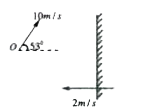



_E01_074_Q01.png)

















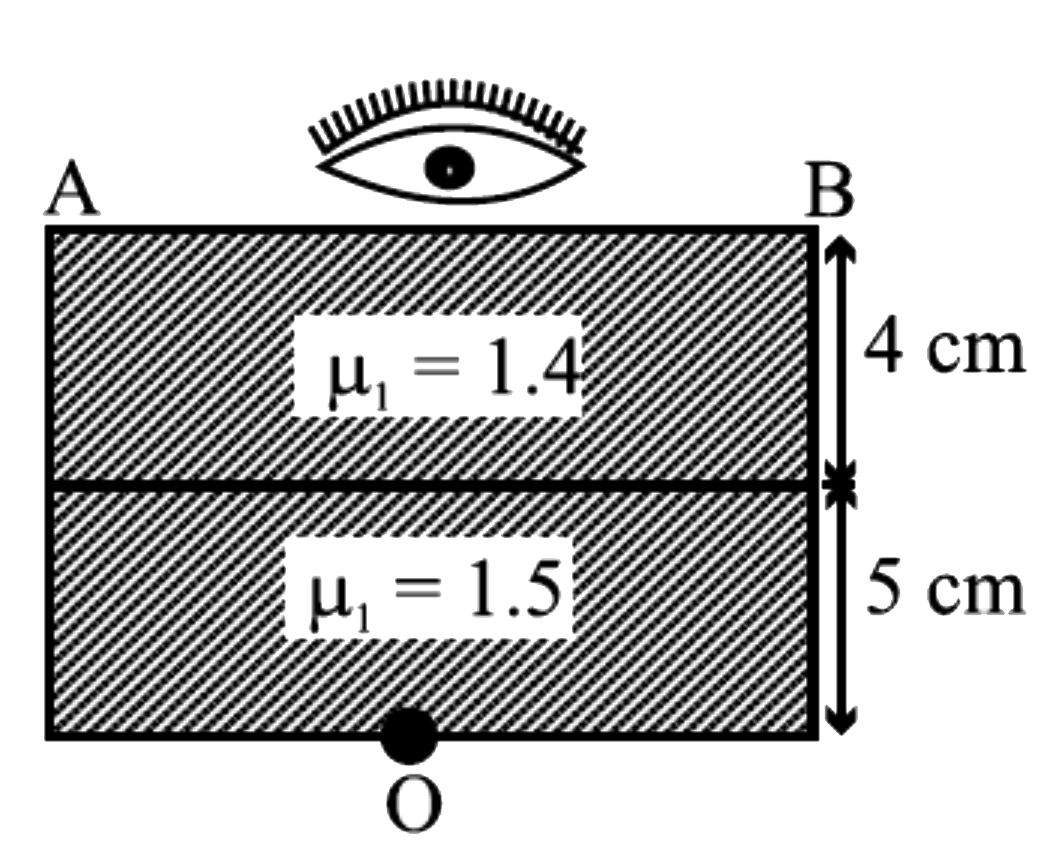





_E01_076_Q01.png)





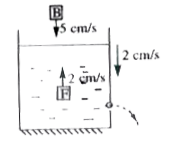
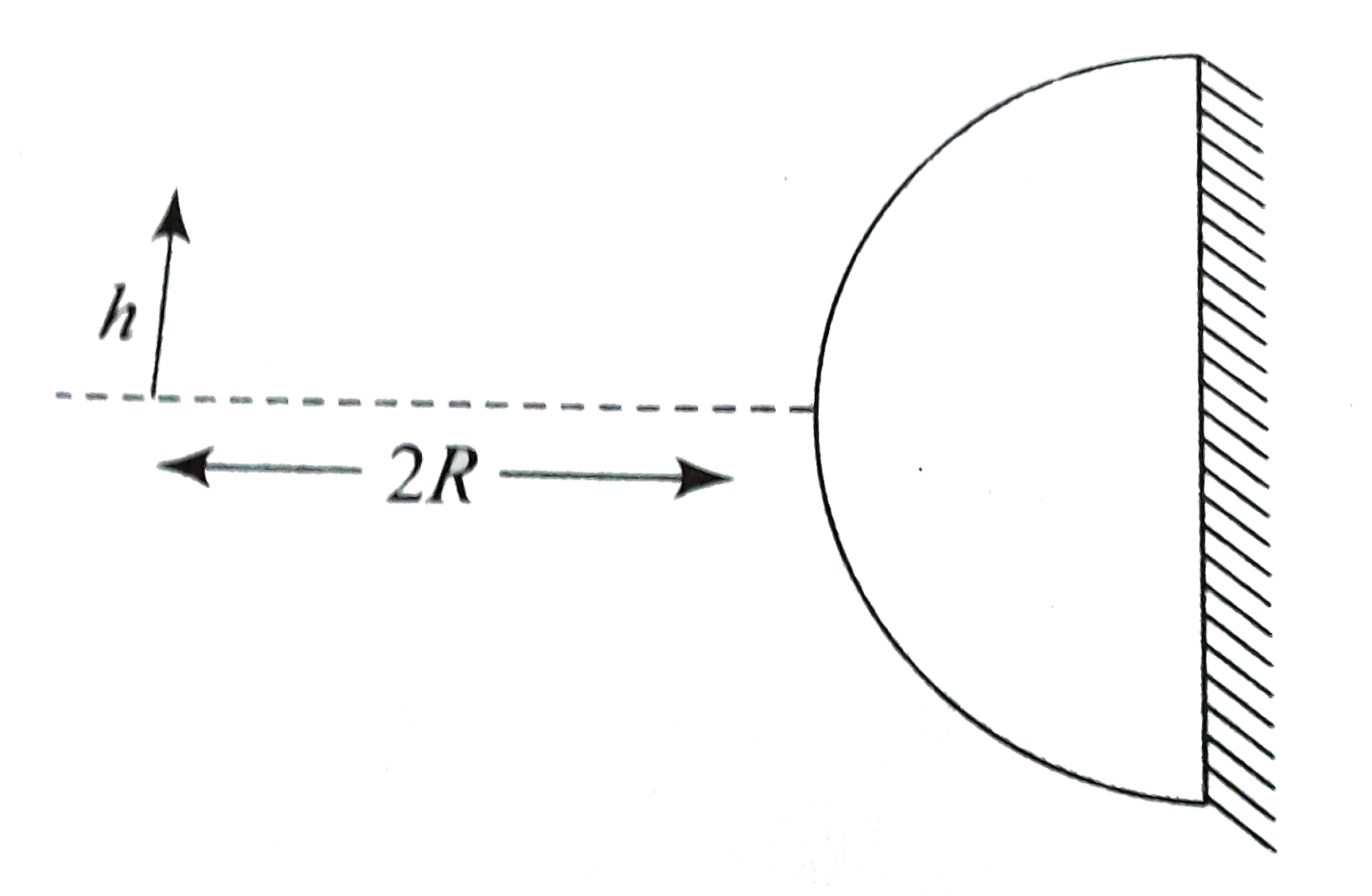




_E01_078_Q01.png)
